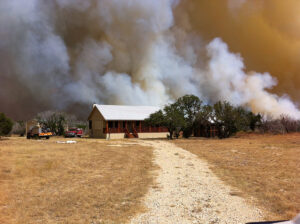Spring Signals a Rise in Equine Influenza
As winter transitions to spring, horse owners and barn managers should be on alert for equine influenza (EIV), a highly contagious respiratory disease that has historically surged during this time of year (see Figure 1). Recent biosurveillance data underscores this seasonal pattern, reinforcing the need for proactive disease prevention and biosecurity measures.
The latest annual analysis (January–December 2024) from the Equine Biosurveillance Program, an ongoing national surveillance study managed by Merck Animal Health in partnership with the University of California, Davis, Equine Infectious Disease Research Laboratory, reveals that equine influenza remains one of the most frequently diagnosed respiratory diseases alongside equine herpesvirus type 4 (EHV-4) and Streptococcus equi subspecies equi (strangles). This trend aligns with the program’s cumulative findings spanning 17 years, which show EIV consistently ranks among the “big three” respiratory pathogens affecting horses (see Figure 2).
“Every year, we see an uptick in equine influenza cases as horses begin traveling for competitions and training in the spring,” explains Duane E. Chappell, DVM, of Merck Animal Health. “The virus spreads rapidly through direct horse-to-horse contact, shared equipment, and even human handlers who inadvertently carry the virus between horses.”
Who is Most At Risk?
Analysis of recent equine flu cases confirms horses traveling for events and competitions are at increased risk. According to the latest Biosurveillance Program update, 58% of horses diagnosed with EIV had a recent history of travel.1 Show horses were the most commonly affected group, accounting for 42% of reported cases.
“Young horses, those under stress from travel, and those in high-density environments like showgrounds are particularly vulnerable to equine influenza,” says Chappell. “Vaccination remains the best line of defense against severe illness.”
Symptoms of equine flu can appear suddenly and might include:
- Fever (often exceeding 102°F)
- Harsh, dry cough
- Nasal discharge
- Lethargy
- Loss of appetite
If you suspect equine flu, immediate isolation of the horse is crucial. “It’s essential to separate symptomatic horses from the rest of the herd and implement strict biosecurity protocols,” says Chappell. “Many upper respiratory diseases can present with similar clinical signs, so owners should contact their veterinarian for diagnostic testing and supportive care recommendations.”
How to Prevent Spring Outbreaks
Given the seasonal rise in cases, veterinarians urge horse owners to take proactive steps to protect their animals. Key prevention measures include:
- Vaccination Ensure horses are up to date on their influenza vaccinations, particularly those that travel frequently. Consider extending vaccination to resident horses that could encounter horses that come and go, including senior horses that may experience declining immune response.
- Biosecurity Limit direct contact with unfamiliar horses and avoid sharing tack, water buckets, or grooming tools.
- Monitoring and quarantine New arrivals or horses returning from events should be monitored for at least two weeks before full herd integration. Daily temperature checks during travel can help identify early signs of infectious disease.
- Hygiene practices Handlers should wash hands (or use hand sanitizer) and disinfect equipment regularly.
“Influenza is a serious yet preventable disease,” says Chappell. “By staying vigilant with vaccination and biosecurity, owners can significantly reduce the risk of outbreaks and keep their horses healthy this season.”
Horse owners are urged to talk to their veterinarian about individualized vaccination recommendations. Get more equine flu facts, and learn more about the Equine Respiratory Biosurveillance Program and regional disease threats with the new equine disease outbreak map.
Figure 1

Figure 2

Merck Animal Health and University of California, Davis (Nicola Pusterla). Infectious Upper Respiratory Disease Surveillance Program. Ongoing research 2008–present.
Related Articles
Stay on top of the most recent Horse Health news with
















